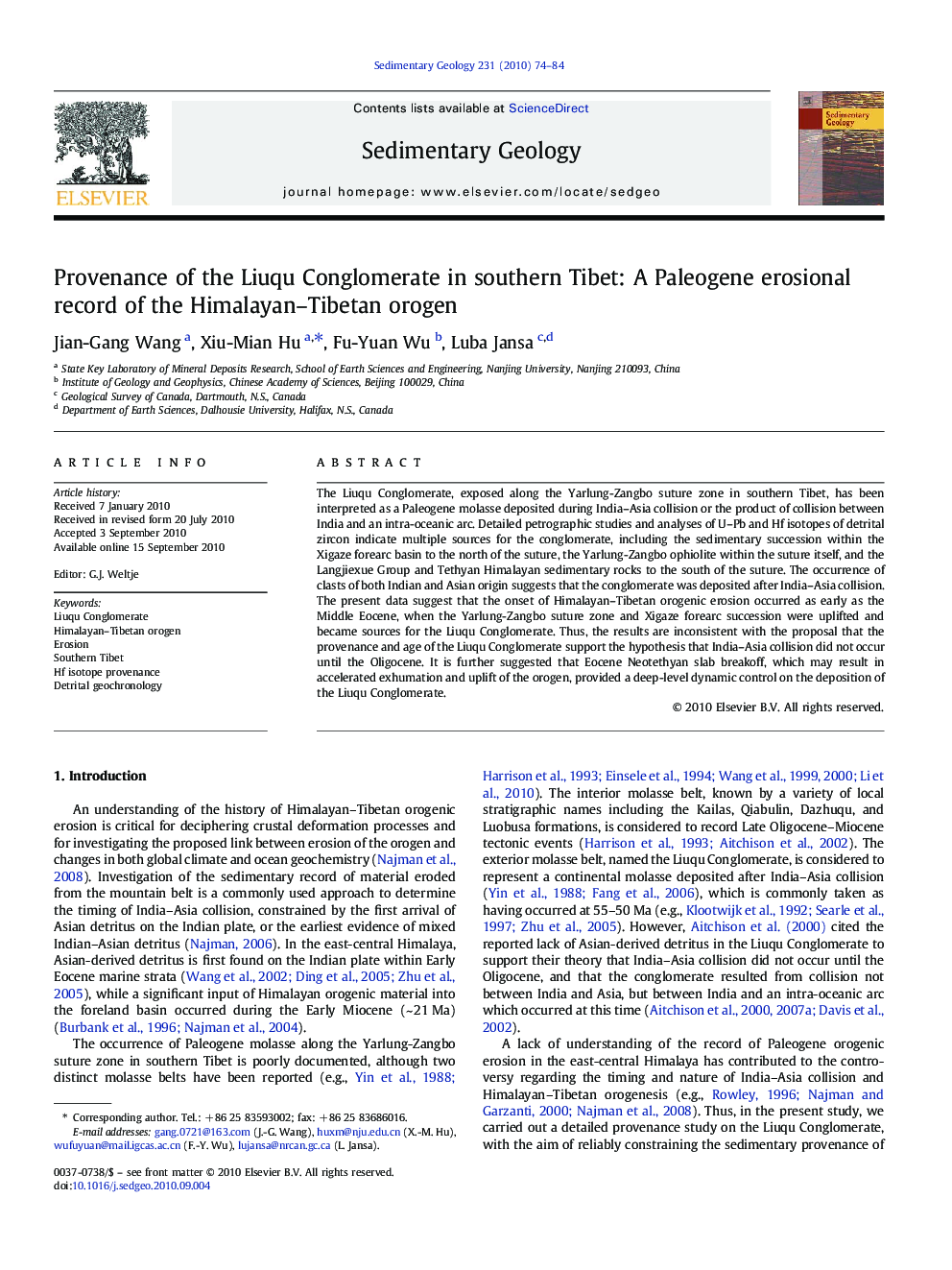| کد مقاله | کد نشریه | سال انتشار | مقاله انگلیسی | نسخه تمام متن |
|---|---|---|---|---|
| 4690087 | 1636118 | 2010 | 11 صفحه PDF | دانلود رایگان |

The Liuqu Conglomerate, exposed along the Yarlung-Zangbo suture zone in southern Tibet, has been interpreted as a Paleogene molasse deposited during India–Asia collision or the product of collision between India and an intra-oceanic arc. Detailed petrographic studies and analyses of U–Pb and Hf isotopes of detrital zircon indicate multiple sources for the conglomerate, including the sedimentary succession within the Xigaze forearc basin to the north of the suture, the Yarlung-Zangbo ophiolite within the suture itself, and the Langjiexue Group and Tethyan Himalayan sedimentary rocks to the south of the suture. The occurrence of clasts of both Indian and Asian origin suggests that the conglomerate was deposited after India–Asia collision. The present data suggest that the onset of Himalayan–Tibetan orogenic erosion occurred as early as the Middle Eocene, when the Yarlung-Zangbo suture zone and Xigaze forearc succession were uplifted and became sources for the Liuqu Conglomerate. Thus, the results are inconsistent with the proposal that the provenance and age of the Liuqu Conglomerate support the hypothesis that India–Asia collision did not occur until the Oligocene. It is further suggested that Eocene Neotethyan slab breakoff, which may result in accelerated exhumation and uplift of the orogen, provided a deep-level dynamic control on the deposition of the Liuqu Conglomerate.
Journal: Sedimentary Geology - Volume 231, Issues 3–4, 15 November 2010, Pages 74–84